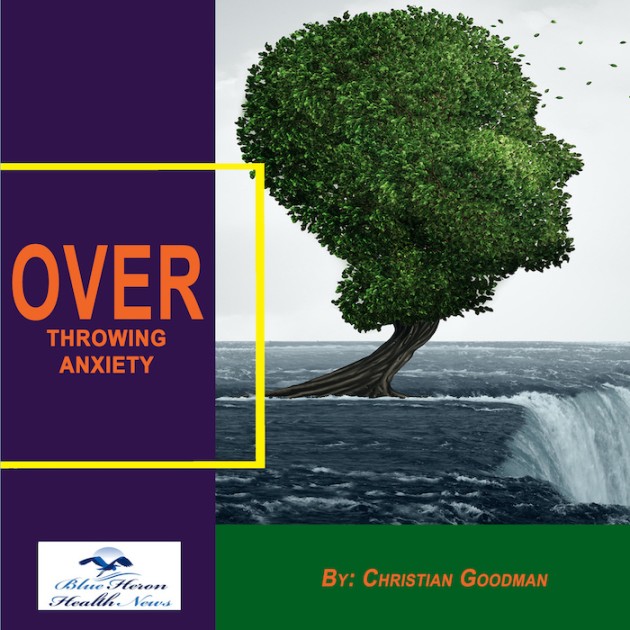
Overthrowing Anxiety™ This eBook includes a complete program to treat anxiety effectively. It guides you to learn the ways to find, understand, and accept the main cause of your anxiety and start using the techniques provided in it to treat the problem.
How can one practice mindfulness meditation to reduce anxiety?
Mindfulness meditation is a powerful tool for reducing anxiety by helping individuals stay present, regulate emotions, and cultivate a calm, non-judgmental awareness of their thoughts. When practiced consistently, mindfulness can reduce the intensity of anxious thoughts, improve emotional regulation, and help manage the body’s stress response. Here’s how you can practice mindfulness meditation to reduce anxiety:
1. Create a Comfortable Space
Find a quiet, comfortable space where you won’t be easily disturbed. You can sit on a cushion, a chair, or lie down, as long as you maintain a position that is both comfortable and alert. Keep your body relaxed, but avoid slouching or lying down in a way that may encourage sleepiness.
2. Focus on Your Breath
Start by bringing your attention to your breath. You can either:
- Breathe naturally: Notice the sensation of air entering and leaving your body, focusing on the rise and fall of your chest or abdomen with each breath.
- Use deep breathing: Breathe deeply and slowly, inhaling for a count of four, holding for a count of four, and exhaling for a count of four. This can activate the parasympathetic nervous system, which helps to calm the body.
The key is to bring your full attention to the physical sensation of breathing. If your mind wanders (which is natural), gently bring your attention back to your breath without judgment.
3. Body Scan
After focusing on your breath for a few moments, move your attention to your body. Slowly scan from the tips of your toes to the top of your head, noticing any tension, discomfort, or sensations. As you breathe, try to release tension in areas where you feel tightness or discomfort.
This practice of tuning into your body can help you become more aware of physical symptoms of anxiety (like shallow breathing or muscle tension) and learn to relax those areas intentionally.
4. Observe Your Thoughts Without Judgment
As you meditate, thoughts and feelings may arise, including anxious or negative thoughts. The goal is not to stop these thoughts but to observe them as they come and go without attaching to them.
- Label thoughts: If a thought arises, simply label it (“thinking,” “worrying,” “planning”) and return your focus to your breath or body. This practice helps create a sense of detachment from the thought, making it easier to let go of anxiety.
- Non-judgmental awareness: Avoid criticizing yourself for having anxious thoughts. Mindfulness meditation encourages a compassionate, non-judgmental awareness, where thoughts are seen as temporary and not something that defines you.
5. Focus on the Present Moment
Mindfulness is about being present in the here and now, rather than dwelling on the past or worrying about the future. When you notice yourself drifting into anxious thoughts about something that hasn’t happened yet, gently bring your awareness back to the present moment.
You can also engage your senses in the present moment:
- Focus on sounds: Listen to the ambient sounds around you.
- Feel sensations: Pay attention to the feeling of your feet on the ground, the texture of your clothing, or the air on your skin.
- Notice sights: If your eyes are open, softly observe the colors, shapes, and details in your environment.
6. Use a Guided Meditation
If you’re new to mindfulness meditation, using a guided meditation app or video can be helpful. Many apps, such as Headspace, Calm, or Insight Timer, offer guided sessions specifically for anxiety. A guided meditation can help you stay focused, keep you on track, and provide a structure for your practice.
7. Practice Self-Compassion
Throughout your mindfulness practice, cultivate self-compassion. When you notice anxiety arising or when you have difficulty focusing, treat yourself with kindness and patience. Understand that meditation is a skill that takes time to develop, and it’s okay if your mind wanders or if you struggle to stay calm at first. The key is to keep returning to the present moment without judgment.
8. Practice Regularly
Mindfulness meditation is most effective when practiced regularly. Even just 10 to 15 minutes a day can help reduce anxiety over time. Consistent practice trains your mind to stay present and to manage anxious thoughts more effectively.
- Start small: If you’re new to meditation, start with just a few minutes each day and gradually extend the time as you feel comfortable.
- Make it a routine: Try to meditate at the same time each day (e.g., in the morning, before bed, or during a break at work) to build it into your daily routine.
9. Grounding Techniques
If you feel overwhelmed by anxiety during meditation, grounding techniques can help bring you back to the present moment. Here are a few options:
- 5-4-3-2-1 grounding exercise: Notice and name 5 things you can see, 4 things you can feel, 3 things you can hear, 2 things you can smell, and 1 thing you can taste. This helps shift your attention away from anxious thoughts and back to your surroundings.
- Focus on sensations: Tap your feet or hands gently on the ground or sit in a way that helps you feel rooted in the present moment.
10. Practice Mindfulness in Daily Life
Mindfulness doesn’t need to be limited to formal meditation. You can incorporate mindfulness into your daily activities, which can help reduce anxiety as it arises throughout the day. Some ways to practice mindfulness in daily life include:
- Mindful walking: Focus on the sensation of each step as you walk, noticing how your feet make contact with the ground.
- Mindful eating: Pay attention to the flavors, textures, and smells of your food, eating slowly and savoring each bite.
- Mindful breathing: Take a few deep breaths whenever you feel stressed or anxious throughout the day.
11. Be Patient and Persistent
Reducing anxiety through mindfulness meditation takes time. It’s normal for your mind to wander, especially in the beginning, and it may take time for you to notice significant changes in your anxiety levels. Be patient with yourself and keep practicing, as the benefits of mindfulness meditation accumulate over time.
Conclusion
Mindfulness meditation can be an effective way to reduce anxiety by helping you stay present, manage overwhelming thoughts, and cultivate relaxation. By focusing on your breath, observing thoughts without judgment, and practicing regularly, you can train your mind to respond to anxiety in a more balanced way. Incorporating mindfulness into daily life can also provide ongoing support for managing anxiety in real-world situations. The key is consistency and self-compassion, allowing mindfulness to become a tool you can rely on for long-term anxiety management.
Overthrowing Anxiety™ This eBook includes a complete program to treat anxiety effectively. It guides you to learn the ways to find, understand, and accept the main cause of your anxiety and start using the techniques provided in it to treat the problem.
